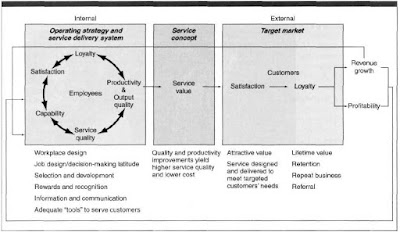 |
| Image courtesy of Pixabay |
I originally wrote today’s post for CallidusCloud. It appeared on their blog on July 12, 2018.
When companies focus on people, their people – employees first, then customers – the numbers will come.
This is a tough concept for a lot of executives to grasp. They know the old management adage, companies are in business to maximize shareholder value, all too well. And that knowledge typically equates to focusing on marketing and sales first, i.e., do whatever it takes to acquire customers, drive sales, grow the business, etc.
But if they change the focus, shift the mindset, to adopt Drucker’s definition of the purpose of a business, to create and to nurture a customer, then things start to change. Nothing changes if nothing changes, right? But when they put the focus on employees first, ensuring employees have a great experience, employees will then, in turn, deliver a great experience for their customers.
Not convinced of this? Or trying to convince your executives that this is real? Here’s something to turn the tide. Take a look at the service-profit chain. I’ve written about it before, but let me go into a bit more detail here. It is a concept well documented in the 1997 book by the same name, written by James Heskett; Earl Sasser, Jr.; and Leonard Schlesinger.
From the book…
Simply stated, service profit chain thinking maintains that there are direct and strong relationships between profit; growth; customer loyalty; customer satisfaction; the value of goods and services delivered to customers; and employee capability, satisfaction, loyalty, and productivity.
and…
The strongest relationships suggested by the data collected in early tests of the service profit chain were those between: (1) profit and customer loyalty, (2) employee loyalty and customer loyalty, and (3) employee satisfaction and customer satisfaction.
Here’s what the Service-Profit Chain looks like.
 |
| Image courtesy of The Service Profit Chain (book) |
The chain begins with internal service quality, which is really about the work environment, the attitudes employees have toward one another, and how they serve their “internal customers.” i.e., fellow employees. From the book: Internal quality is measured by the feelings that employees have toward their jobs, colleagues, and companies. Sounds like measuring the employee experience to me!
They provide examples of Southwest Airlines and American Express and how these two companies have linked internal service quality to profitability.
The next link in the chain is employee satisfaction, which is driven by the employee experience (aka internal service quality). It is linked to – or drives – employee retention. Southwest Airlines was again cited as an example for this linkage, as was a property and casualty insurance company (no name provided), for which they discovered that 30% of dissatisfied employees were likely to leave the company, a percentage three times higher than for satisfied employees.
Not surprisingly, the next linkage is between retention and productivity. When employee retention is an issue, companies spend time and money on recruiting, hiring, and training new employees. In addition to the financial impact, productivity is inhibited because companies basically start over with each new employee, teaching them the ropes, building new relationships with customers, and more.
Employee retention and productivity then drive external service quality. Southwest Airlines and American Express Travel Services were cited as prime examples of companies reaping the benefits of this connection. At Southwest, where we already know employee retention is high, their positions are designed so that employees can do several different jobs, if needed. That flexibility allows them to board more passengers faster than other airlines. At American Express Travel Services, productivity equates to the speed and accuracy in which tickets are prepared, showing that quality and productivity can go hand in hand.
This service quality then drives customer satisfaction. Customers are value-driven, and the book notes that value is a combination of results produced for customers and how they are delivered, i.e., not just fast and accurate but also in a professional and courteous way. As the diagram shows, customer expectations are met. The challenge is understanding what those expectations are.
Customer satisfaction links to customer loyalty, in the form of retention, repeat purchases, and advocacy. While this could be the least reliable linkage in the entire chain (for questions on that, take a look at my post on the Apostle Model), Southwest Airlines and American Express Travel Services would debate that, given their results.
When attained, customer loyalty is linked to profit and revenue growth. In their research for the book, Sasser et al took a closer look at market share and its impact on profitability. Once again looking at Southwest Airlines, at the time the seventh largest airline, they were able to conclude that the quality of market share, measured by customer loyalty, is as important as the quantity of market share. Their research at this time brought about the famous statistic we’ve all quoted time and time again: a 5 percentage point increase in customer loyalty could produce profit increases of 25-85% in the service industries they studied.
Here’s how I interpret this chain, and it falls in line with what I preach: Put employees first. When they have a great experience, your customers will have a great experience. And so will the business. There are a lot of examples in The Service Profit Chain book of the linkages.
Still need convincing? Take a look at the book and use the examples to determine how you can do the same for your business. While the examples may not apply to every industry, I think you’ll get a pretty good sense of what is required and what is possible.
Great leaders are willing to sacrifice the numbers to save the people. Poor leaders sacrifice the people to save the numbers. -Simon Sinek



![[Research Round-Up] New Study Shows the Continuing Value of B2B Thought Leadership](https://customerthink.com/wp-content/uploads/development-2010010_1280-pixabay-innovation-ideas-think-1-218x150.jpg)